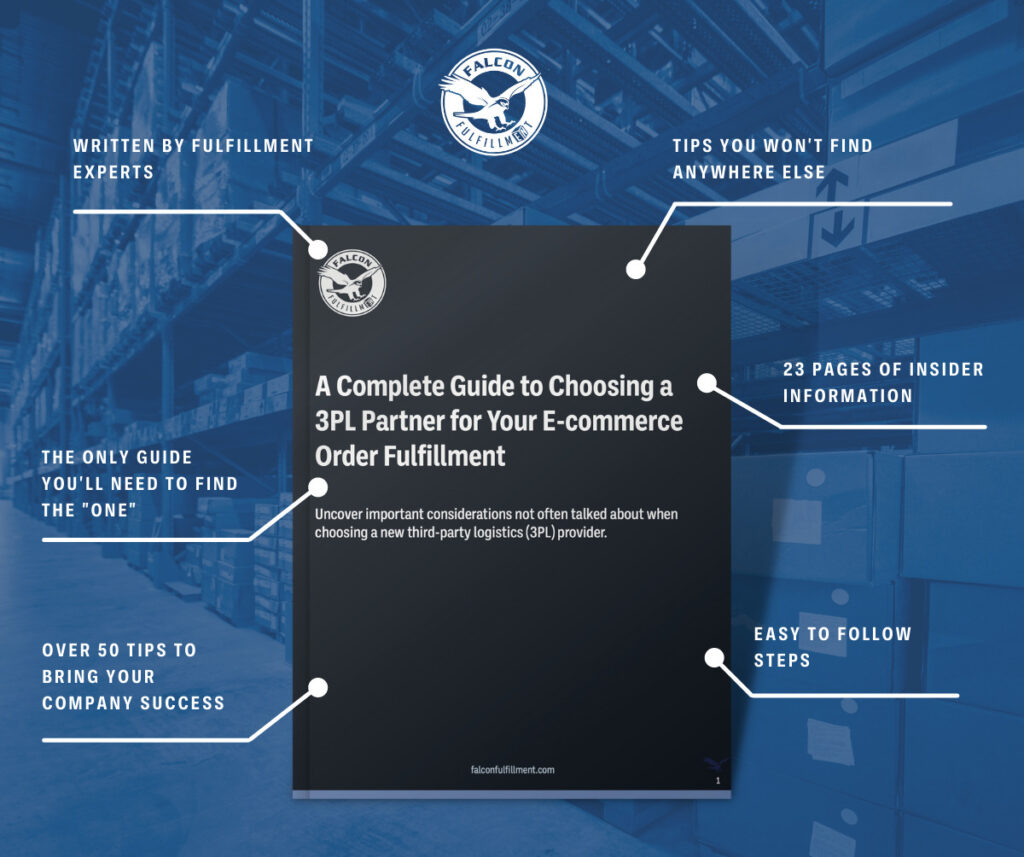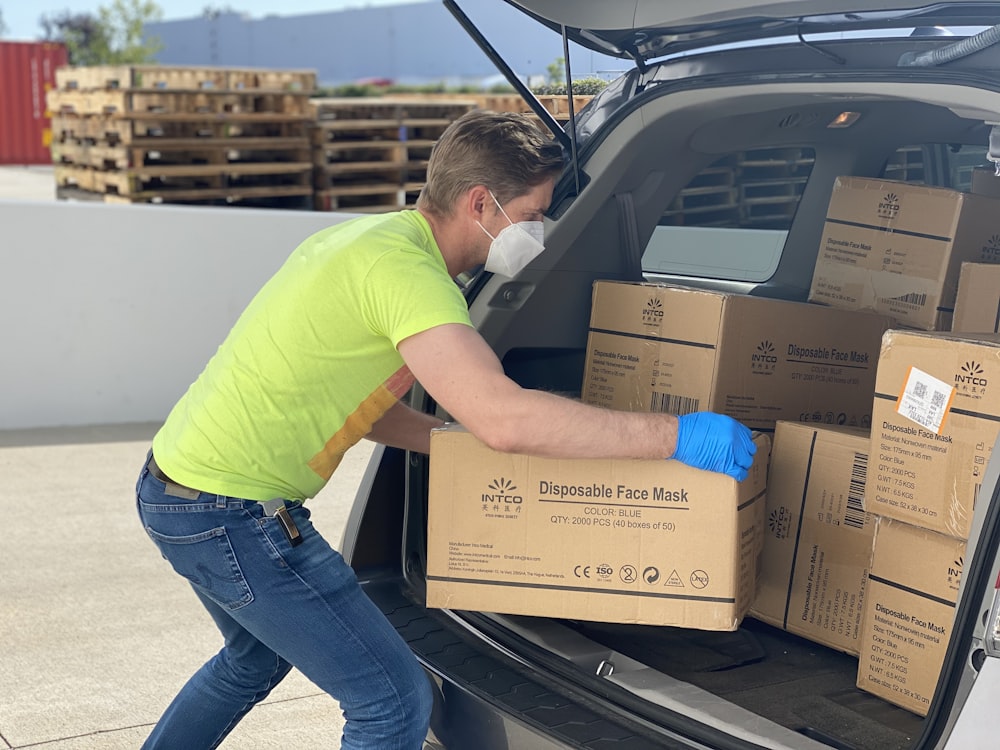8 Valentine's Day Campaign Ideas
Valentine's Day is just around the corner, while we know you already have this year's love campaigns up and running, it's never too early to start thinking about the success of next year. To give you some things to consider, we've come up with 8 Valentine's Day Campaign Ideas that are trending right now. Which ones will you store for the future?
8 Valentine's Day Campaign Ideas
Match Maker Campaign
What’s better than matching with your Honey? An eCommerce store that does the matching for you! Introducing a campaign that matches products together to create ready-to-go personalized bundles is a sure-fire way to retain customers and attract new ones. A few match-making ideas that you can easily start promoting right now could be; matching partner products according to gender, identity, sexual orientation, and even age, creating a themed bundled set, or matching best-selling items with least-selling items. The possibilities are endless!

Self-love Campaign
It’s safe to assume that not everyone is celebrating with others. Creating a self-love campaign for singles and promoting the many ways individuals can treat themselves on Valentine’s Day is a great way to get people on your team. Even if the day of romance isn’t their favorite, show them it can be by shopping with your brand.

Bark to Heart Campaign
Sometimes that special someone has 4 legs, a tail, and a heart full of pure love. Appeal to pet-owners this Valentine’s Day with themed pet products, pet/owner bundles, or even a local fundraiser to make sure owners and pets alike don’t miss out on the love.

Anti-love Campaign
What? There’s people out there who don’t enjoy Valentine’s Day? Big surprise!
Cater to your less-than-loving customers with an Anti-love Campaign. Offer anti-Valentine’s Day themed products, break-up bundles, or even customized items with the name of an ex - for the sole purpose of lighting it on fire. The hateful hilarity for this day could truly be endless. Capitalize on it.

Galentine’s Campaign
Valentine’s Day isn’t just for romance. Remind your shoppers that it’s okay to spoil friends and family with a Galentine’s Campaign. Offer best friend bundled items, girl's night packages, or even supplies for a DIY spa night - the more creative you are, the more fun your customers will have!

Little Me Campaign
Do you know who else loves to be loved? Your kids! Use Valentine’s Day as an excuse to show the little ones some love with a Little Me Campaign for your customers. Think “Easter” but with a giant heart in place of a bunny. Offer love-themed scavenger hunts, hassle-free crafts supplies, mommy and me bundles, daddy-daughter outfits, or even fun bath-time toys for the littlest ones in the family.

Last-Minute Love Campaign
There’s always going to be customers looking for last-minute gifts during the days before every gift-giving holiday. Cater to the procrastinators, the forgetters, and the busy schedulers with a Last-minute Love Campaign. Offer deals on top-rated products, promote expedited shipping, and show just how great a thoughtful gift certificate can be.
At the end of the day, Valentine’s is a time to be grateful and loving toward those most important in your life. That’s why providing a one-of-a-kind experience to customers is such a big deal. By utilizing these campaign ideas you have the ability to retain customers, attract new ones, and establish a presence in the hearts of your shoppers.
Fall in Love with Falcon
Once you’ve chosen which campaigns work best for you, it’s time to focus on executing perfectly to deliver an unforgettable experience to shoppers. Fulfilling with Falcon helps take the stress away from creating themed and personalized experiences while still providing professionalism that sets your eCommerce apart. Fall in love with Falcon this Valentine’s Day and let us help you share that love with customers.
Case Study: Why Sustainable Brand Sheets & Giggles Chose Falcon Fulfillment
All images courtesy of Sheets and Giggles
Sheets & Giggles is an environmentally-friendly bedding company producing luxury sheets and other bedding items using 100% sustainably grown eucalyptus lyocell. This case study touches on who S&G are, why they partnered with Falcon Fulfillment and their experience in doing so.
Sheets & Giggles’ history began with a movie. A movie about an international arms dealer and exploiting government initiatives – War Dogs, to be specific. Throughout Jonah Hill’s beloved film there’s a single scene that sets the stage for today’s well-known sustainable bedding brand.
“I got so frustrated with Miles Teller’s character when he had to burn all those bedsheets out of the back of a pickup truck because he couldn’t sell them to retirement communities. I paused the movie and wrote a business plan for a bedsheets company that night.”
Colin McIntosh, Founder of Sheets and Giggles
From that moment forward the legacy of a sustainable bedding company had begun.
Fast forward to September 2017 and Colin voluntarily leaves his position with Revolar – a company working to actively reduce and stop the sexual assault and violence against young women. During his employment, the company sent over 60,000 alerts to emergency officials and ultimately took part in saving the lives and livelihood of young women around the world.
Key Metrics:
- Sheets and Giggles hit $9 million in revenue for 2021, surpassing the first 1 million they hit in 2020, only 3 years after shipping their very first order.
- 100% plastic-free packaging with no wasteful package filler.
- A partnership with One Tree Planted, where 2 eucalyptus trees are planted for every 1 that is harvested for sheets.
- A donation program that rewards buyers with 10% off for donating old sheets, ultimately reducing the 10 million tons of textiles that end up in landfills each year.
Sheets & Giggles Case Study: Why Sustainable Brand Sheets & Giggles Chose Falcon Fulfillment
On October 19th, 2017, three weeks after leaving Revolar, Colin launched Sheets and Giggles. Over the course of a few months, Colin worked on the company logo, typography, and other small details that a company needs to have a strong brand. Colin and his intern started making headway on Sheets & Giggles in January of 2018.

But, Why Bedding?
“So first and foremost, I’m a big sustainability person. And my last company was literally trying to fight sexual assault and violence on college campuses. It was like a very mission-driven company. But I didn’t want to do something as heavy as that. I mean three years of that and, while I could have gone on longer if we had been more successful, it starts to wear on you with the stories and the things you hear. I did want something a little lighter, but I still wanted something mission-driven. And so I knew I wanted to do something with sustainability.”
– Colin McIntosh, Founder of Sheets and Giggles
As Colin thought of the millions of ways he could get into the ecommerce industry, and the few ways he could do it successfully – sustainable bedding came to mind.
“I wanted a physical product that was sustainably made in a massive commodities market that had zero brand differentiation or loyalty. I thought, ‘does bedding fit my criteria?’ and it did – perfectly. It’s a massive commodities market, it’s highly fragmented, there’s no loyalty or brand differentiation, there weren’t any good sustainable options. Everything was mostly physical retail so you could really make some noise online.”
– Colin McIntosh, Founder of Sheets and Giggles

After searching for the best fabric to create his bedding empire, lyocell came out on top as the most sustainable material. With the use of eucalyptus lyocell, S&G products created a near-zero environmental impact, with up to:
- 96% less water used than cotton alternatives
- 30% less energy used than cotton alternatives
- 0% of pesticides or insecticides used. (Cotton uses 16% of the world’s insecticides)
Colin launched S&G’s first-ever crowdfunding campaign on Indiegogo in May 2018. Within a month, his campaign raised $284,000, making it the largest bedding campaign in Indiegogo history and the second-largest crowdfunding campaign in the bedding sector!
The Rise of Sustainable Sleeping
During their early years, Sheets & Giggles rented warehouse space from a local company in Colorado so that they could start processing and shipping orders. Between 3 people and 1 part-time warehouse employee, the group worked every weekday evening and every Saturday to get orders to their customers.
When the volume of orders increased and showed no sign of stopping, the crew realized that what they were doing was not efficient. They needed to up their fulfillment game so they could get out of the warehouse. So what did they do?
This marks the pivotal moment S&G decided to partner with a 3PL.
“We chose a 3PL based on recommendation and networking. We went with one of those giant 3PLs with “ship” at the first part of their name. What we found was: we got lost. They were unresponsive. I couldn’t get a person on the phone, only voicemails. I couldn’t get answers [within a day]. I couldn’t get the paperwork I needed. They would lose goods and I had to make an appointment to do anything.”
Mike Pearl, Director of Product and Operations

Sheets and Giggles quickly realized their first choice in a 3PL partnership wasn’t the right fit, so it was up to Mike to find the right one.
“I started out with about 12 different 3PLs that were either recommended to me or I found myself, and I created a spreadsheet. I filled it up with questions I intended to ask [each 3PL] and it took me about 4 months to narrow it down to two – and I picked Falcon Fulfillment out of those two.”
Mike Pearl, Director of Product and Operations
So, why did S&G ultimately decide to go with Falcon Fulfillment?
- They wanted a 3PL that would care about their business.
- They wanted to be able to call and get a responsive answer.
- They wanted a dedicated account manager that would assist them personally.
“I was looking for a medium-sized 3PL that we could be important too. I was not important to the huge 3PL because I wasn’t that big compared to their largest customers. I knew what size I wanted my 3PL to be and Falcon fit that role. I was able to get the personal touch that I had been seeking, in terms of being able to access actual human beings in the course of a workday, get call-backs and have people answer the phone. I could call and ask someone to run over to the shelves and check [something] for me and they would. I was really looking for that kind of personal touch and responsiveness without losing any capabilities – and the prices were good.”
Mike Pearl, Director of Product and Operations
Sheets and Falcons
After their first year with Falcon Fulfillment, we take a look back at how their 3PL partnership choice has paid off.
“I will say that every time we come up with something new that we want to try, Falcon is always willing to try it. Sometimes it’s required that the Falcon IT team do integrations or something new in software, some of it has required that [Falcon’s Director of Operations] sit down with teams, and we even taught Falcon how to do a Good Morning America sale, which, on the last one we did, we shipped and sold over $600,000 in a day. I commend Kipp (the Vice President of Falcon Fulfillment) and his team because they’re willing to learn along with their customers.”
Mike Pearl, Director of Product and Operations

Aside from the many members who aid S&G in their 3PL journey, Mike continues with praise for some of those S&G works with closely:
“I give Lori (Director of Operations) a ton of credit because she goes above and beyond to find answers for you. She knows her stuff and she will go get the information. She’s timely, very transparent, and honest, and I appreciate that. All in all, it’s just kind of that all-hands-on-deck type of attitude.”
“My two account managers are fabulous. It’s not uncommon for them to be out pulling orders. I asked for a daily report and my Account Manager instituted a daily report, which gets sent to me everyday. They’re willing to do those things that aren’t necessarily part of the ‘normal menu’ from Falcon, but when we express a desire to get that service – they institute it.”
Mike Pearl, Director of Product and Operations

It has been one year since Sheets and Giggles partnered with Falcon Fulfillment. Their business has continued to scale and evolve. Here at Falcon we enjoy working with S&G because not only are their witty jokes our favorite, but they’re also professional, friendly, and most of all, just darn good people.
We asked Mike what S&G has enjoyed most about our first year together and this is what he said:
“You know, I really go back to the personal touch and the ability to change on the fly. With Falcon, if an order has not gone on the FedEx or UPS truck yet, I can change it – they’re willing to do that. They’re willing to go out and find it and make the changes that I’m requesting. If a customer calls and says they ordered the wrong size, color, etc Falcon has the ability to change those things. In addition to order changes, they allow us to make changes to our freight services. They’ve allowed us to do what’s best economically for S&G, sometimes using our own freight services instead of theirs – which is a big deal in the 3PL business.”
Mike Pearl, Director of Product and Operations
Overcoming Sheet Together
In the beginning, there were challenges that S&G faced. Falcon Fulfillment was able to help with their long, faulty receiving process.
“The receiving aspect was huge. In 2 years, I don’t think I ever got the receiving checked incorrectly at the other 3PL. I had to make an appointment, lots of times I couldn’t get my container in the door for 2 weeks, and my inventory was always wrong. I have not had those problems with Falcon, and believe me, we’ve dumped some “sheety” shipments on them. Shipping-wise, things backed up because of the holiday. Yesterday, I looked and we had received 182 orders. Falcon shipped out 642 orders. So, they’re catching up in a hurry with the backlog of orders. Order’s don’t sit around at Falcon!”
Colin McIntosh, Founder of Sheets and Giggles
Exciting Things Are Coming in 2022 For Sheets & Giggles
With such a successful two years, we can only expect great things from S&G moving forward. They’ve been able to find success with their signature products because of their consistent quality and sustainable practices.
As much as we would love to include the juicy, info-filled insights Mike provided us, it’s only appropriate for us to say that 2022 is the “year of new products”. It’s safe to say that Sheets and Giggles will be introducing never-before-seen inventory that customers are likely to fall in love with.
Learn more
Boost your e-commerce business by finding a better order fulfillment partner. See if Falcon Fulfillment is the best fit for your brand.
Beginner’s Guide to Third-Party Logistics (3PL)
The world of e-commerce is always changing, therefore understanding the roll of Third-Party Logistics is integral to keeping up. In light of this our beginner’s guide to third-party logistics (3PL) will delve into the essential aspects, offering insights into fulfillment services, warehousing, and much more.
Read More…
Before and After: How the Pandemic Changed the Wellness Industry
Following the beginning of Covid-19 the wellness industry has transformed in ways that it may never return to.
We’ll be going over various trends, topics, and insights to help provide you with an idea of where the wellness industry is headed and what steps you can take to prepare your business.
The Concept of Wellness
The idea of wellness has always been popular. Humans have been producing and utilizing products for their health, wellbeing, and beauty for millennia.
This growing trend will only rise in popularity as science evolves and people become more interested in prioritizing their health and wellbeing.
According to the 2020 Mckinsey Future of Wellness Survey, consumers in every country spend the most on products dedicated to health, wellness, and beauty. Specifically, the personal care, beauty, and anti-aging sector are what make up the largest part of the wellness industry.
With these statistics, it’s understandable that:
"The wellness industry made up 39.99% of the entire global market in 2017."
In the last four years, that number has only risen. Additionally, the idea of putting health and well-being first is becoming more popular all over the world. This is great news for the health and wellness industry.
Even though things are changing in a way that is good for businesses, there are also changes that can make or break your business.
How has the pandemic changed the wellness industry, and what you can do to change with it?
A Shift in Interest
During the pandemic in 2020, it didn't take long for people to realize how fragile their health is and what it takes to damage it. We saw a sharp spike in consumers panic buying things like hand sanitizer, cleaning supplies, vitamins, and more because they thought they were going to get sick or product would run out.
People around the world started to think about how important it was for them and their families to be healthy. This motivated them to want to put their health first. In fact, more than ⅓ of consumers stated that their views on health and wellness have significantly changed over the last year and they were more concerned for their health, their family, and even the health of their pets.
"80% of Americans intend to regularly practice self-care because of Covid-19".
Now that the waves of the pandemic are slowly calming, it’s clear to see how the pandemic has changed the wellness industry.
At Home Wellness
As quarantine swept the world, people stayed inside their houses at all costs. Jobs transitioned to remote positions, online shopping grew, and our smartphones were the only thing that kept us connected to each other and the outside world.
In the beginning, at-home activities became more popular as time frames extended and people grew restless. Many people started making their own food and learning new skills. They also started reading books and paying more attention to their health.
As public buildings became increasingly inaccessible, people turned to cellphones, which ultimately digitized our everyday activities. This meant that individuals all across the world could accomplish practically everything they used to do all from home.
This included contactless grocery delivery, home-cooked meals, college lectures from your computer screen, and even a digital personal trainer right in your living room.
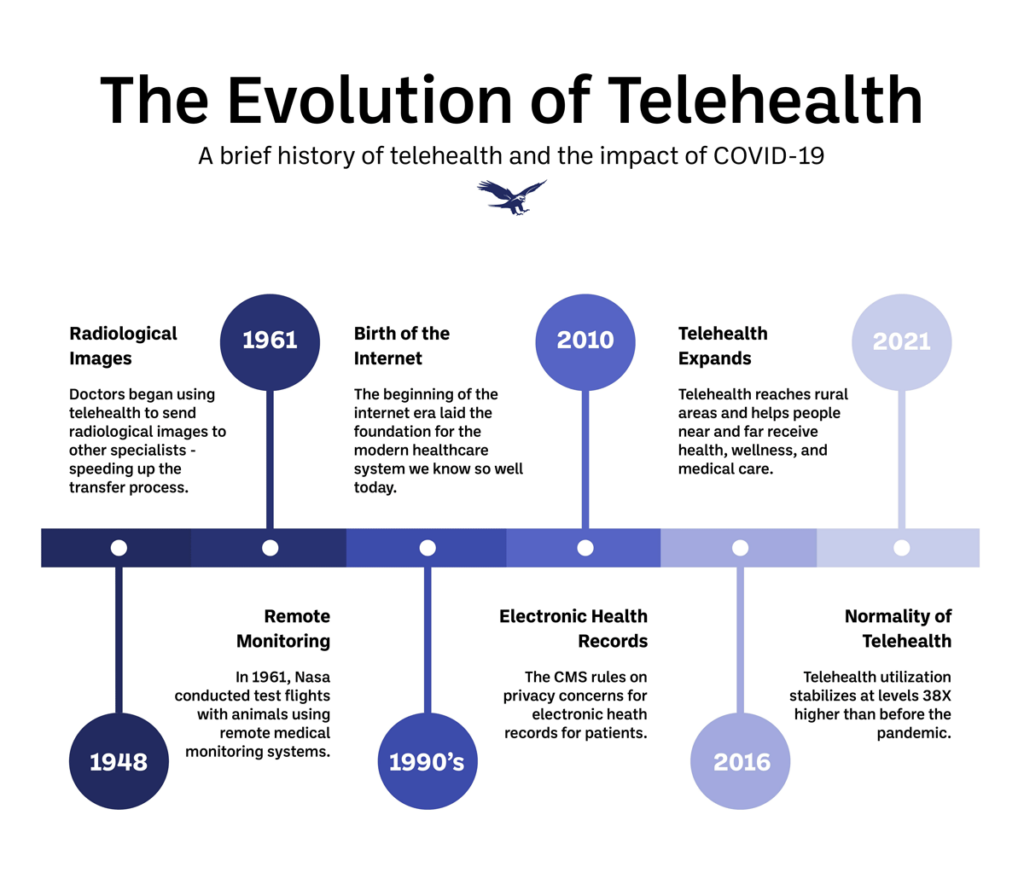
The limits of what you could achieve with your smartphone were quickly becoming endless. As Covid-19 continued on a rampant path, people grew more passionate about remaining inside, while still prioritizing their health.
This introduced the popularity of pill and supplement delivery services, online gym memberships, zoom-hosted health appointments, and much more.
With this rise in the use of telehealth, it’s clear that this trend is here to stay. In fact, it’s estimated that up to $250 billion dollars of the current U.S healthcare spending could be shifted to telemedicine.
What can you do?
-
-
- Consider what ways you're able to offer a digital experience to your customers.
- Focus on which aspect of your business can be digitally accentuated the most.
- Offer classes covering subjects your brand can teach your buyers about.
- Start a blog covering the focus of your brand.
-
Personalization
As telehealth grows, so does the expectation of personalization from consumers. With the rise of digital platforms adhering to all of our wants and needs, buyers are slowly coming to the conclusion that one size does not fit all.
There is a new trend of personalizing things so that everyone can get what they want, need, and like.
Now, buyers want their purchases tailored more towards them. They no longer want generic hair care for the masses. Consumers want hair care crafted specifically for the hair type and goals. The same goes for all wellness products and purchasing experiences.
As our digital world continues to grow, it’s safe to expect a high rate of individual personalization through telehealth and wellness products.
What can you do?
-
-
- Allow customers to personalize their online experiences.
- Include easy to find website preferences that customers can choose from (dark mode, bigger text, text to speech options, etc.)
- Create a poll to learn what your customers are looking for in terms of customization.
- Add the ability to create an account with saved preferences.
-
Digital Storefronts
People and businesses knew that as more and more things became digital in 2020, going digital might be the only way to move forward.
With the pandemic slowing the success of physical storefronts, business owners everywhere began thinking of ways they could offer a contactless and completely digital buying experience. Eventually, as demands from consumers rose,
"20-30% of all businesses transitioned their main presence to an online storefront".
This initial switch wasn’t expected to happen for another few years during the growth of e-commerce, and even so, the change was expected to be gradual.
What can you do?
-
-
- Transition your store to a digital platform A.S.A.P
- Hire a web designer to make the process faster and easier
- Research your competitors and see what they are doing online.
-
Increased Delivery Expectations
Once the trend of online shopping reached the corners of the world, new expectations came along with it. In a rush to be the first to make an impact in the e-commerce industry, companies everywhere began offering different promotions, guarantees, and promises.
Advertisements like “Covid-19 Safe”, “Contactless 2-Day Delivery”, and even “24-hour delivery” flooded the internet and email inboxes. As people began to transition, they enjoyed the aspect of what shopping was quickly turning into.
Not only was it safer in times of a global health crisis but it was more convenient than traditional shopping. Consumers quickly took a liking to the new and easy ways to order products, groceries, items, and almost anything else. Eventually, demand grew a little too much.
Many companies struggled to keep up as businesses flocked to supply their customers with the many products they bought at the click of a button. This was due to many reasons, some including lack of staff to complete the abundance of orders and lack of products due to international shipping delays.
Now, businesses everywhere are playing catch up, trying to stay at pace with consumer delivery demands.
As the holiday season grows near, it’s important to backstock your inventory, prepare for a higher spike in orders, and find the staff needed to comfortably fulfill orders.
What can you do?
-
-
- Prepare your inventory with extra shipping supplies.
- Make sure your items, as well as back-stocked items, are stored inside your facility or have safely arrived at your 3PL's warehouses.
- Pre-assemble custom packaging to save time and avoid delay.
- Hire extra workers to help fulfill orders and support your main staff.
-
Sustainability
E-commerce is going to have a lot more changes in the near future. First, there will be more shipping demands, more digital shopping experiences, and more personalization. Second, increased consumerism is making the demand for greener practices all the more important.
Buyers are now growing more passionate about greener shopping. This includes cleaner, safer, and more environmentally friendly products and packaging.
"41% of consumers said they would choose a healthier option vs a more effective one".
Additionally, buyers now look for minimal packaging materials, reusable, recyclable, or biodegradable packaging included in their orders, and are even transitioning to companies with greener practices and healthier mission statements.
What can you do?
-
-
- Begin transitioning to eco-friendly packaging.
- Research what your competitors are doing.
- Determine what materials would best suit your brand and impact your customers most.
-
Guided by Falcon
After an overview of how the pandemic has changed the wellness industry, it’s safe to say that these changes are here to stay. As time continues, new trends will emerge and current ones will develop significantly.
That’s why it’s important to remain updated on the news of not just the wellness industry, but on e-commerce as a whole.
At Falcon Fulfillment, we’re looking out for business around the world. The ones that may not know how to battle some of these new challenges.
The ones who need a little extra insight on what’s happening in the industry, and the ones who are looking to perfect their game. We are the official guide to any and all e-commerce brands looking to extend their reach and grow their success.
We hope you found this article useful and it helps you steer your business successfully through an everchanging sea of e-commerce uncertainty.
Holiday Shipping: Which Option is Best for E-commerce?
Quarter 4 is here and peak season is already at the doors of e-commerce businesses everywhere. With delivery delays being the largest concern for 38% of consumers, learning which holiday shipping option is best for you will help prepare your company for a successful quarter 4.
Today, we will be discussing holiday shipping and what options there are for your business. We'll guide you through the world of shipping, from carrier information to local insight, as you prepare your company for a proactive and successful quarter 4.
Free Shipping
While free shipping is the best eye candy for customers, it’s no walk-in-the-park for e-commerce businesses. In order to offer free shipping, the delivery price must be paid by someone, somewhere.
Although your customer will enjoy their purchase with free shipping, unfortunately, your carrier will not deliver your packages for free or in exchange for holiday spirit. (It would be a lot cooler if they did).
So, who pays the shipping fees and why is this such a popular option amongst e-commerce businesses?
"84% of shoppers have made a purchase because shipping was free."
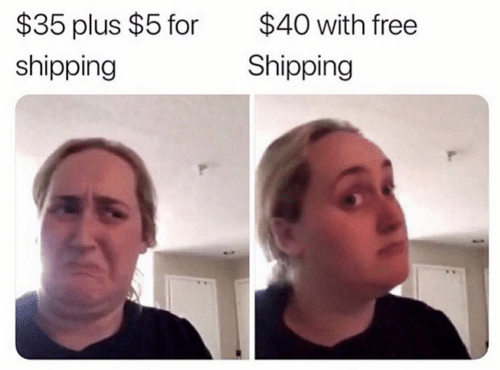
We could give you a long, complicated explanation of why a free shipping option is popular and how it's so successful, but, let's keep things clear and simple. Are you ready for this?
Free shipping expenses are paid for by the customer.
We know this might come as a shock but be assured that what you just read is true. To answer your next question, let's talk about how they do it.
Free shipping is in fact, not free. In order to achieve it, customers are met with intriguing promotions to persuade them into spending more in order to receive the reward of free shipping.
In reality, e-commerce businesses are simply increasing product prices or promoting higher-order totals in exchange for free shipping - which is already hidden in the cost of an item or the total amount of an order.
"86% of consumers abandon their carts due to the cost of shipping."
In terms of holiday shipping, a free shipping option is a great strategy that isn't going away anytime soon. If this option would be beneficial for your business or you'd like to learn more about the process of offering free shipping, check out our recent blog article going over 10 ways your company can offer free shipping and how to do it.
Pros and Cons of Free Shipping
Pros
-
- A free shipping option reduces shopping cart abandonment.
- Free shipping policies retain current customers and promote new ones.
- Free shipping promotions increase sales.
Cons
-
- A more expensive product.
- If shipping rates increase, either the price of your item does too or your company absorbs the inflated costs.
- Switching to budget shipping options could result in a bad delivery experience for your customers.
Flat Rate Shipping
If you're torn between increasing the price of your products or absorbing the costs, there is an alternative for you.
Using a flat rate shipping option, you can choose a precise shipping fee that covers the bulk of your shipping expenses. This will allow customers to pay a base cost for their order and oftentimes, saves your company from spending too much on shipping.
However, if a customer purchases a heavier item and opts for a flat rate shipping option, your company will have to absorb the extra expenses.
How Does Flat Rate Shipping Work?
- Purchase a USPS flat rate box.
- Pack your items and address the box.
- Drop off your package at a USPS office to ship.
- Or use a 3PL to handle all of this. ;)
Pros and Cons of Flat Rate Shipping
Pros
-
- Predictable shipping costs.
- Avoid surcharges.
- Included shipping insurance.
Cons
-
- You lose the ability to use branded packaging.
- If products are heavier than the flat rate limit, you will absorb the extra expenses.
- For local customers, flat rate shipping might cost you more money than what you save.
Is Flat Rate Shipping Right for You?
A flat rate strategy is a great holiday shipping option for e-commerce businesses with small yet heavy (anything up to 70 pounds) inventory; such as books, monthly subscriptions, etc.

Exact Cost Shipping
Also known as real-time carrier shipping, exact cost shipping is a process where shipping charges are automatically added at checkout. The shipping total will reflect the weight, dimension, and the customer's shipping destination to provide an accurate shipping rate.
This is a simple and transparent holiday shipping option; however, when offered, cart abandonment rates may increase.
How Does Exact Cost Shipping Work?
- A customer makes a purchase.
- Accurate shipping rates are added to the subtotal to reflect the package, weight, and destination.
- Customer pays for order and shipping fees.
Pros and Cons of Exact Cost Shipping
Pros
-
- Calculate shipping costs automatically.
- Charge customers an exact amount.
- Drive more international sales.
Cons
-
- Increased cart abandonment.
- Cannot be used for promotional purposes.
Is Exact Cost Shipping Right for You?
We suggest carrier-calculated shipping to e-commerce brands that do not have the capacity to include shipping costs into their products. It's ultimately cheaper to use real-time carrier shipping since it prevents you from losing money not just on delivery but also on merchandise.
Same-day, 2-day & Expedited Shipping:
Even while most customers are willing to wait for longer delivery times in exchange for free shipping, order discounts, or even lower environmental impacts, around the holidays attitudes begin to shift. Suddenly, what could have waited before is now a rush to get their holiday gifts in time for Christmas.
When peak season arrives and consumers rush to make last-minute orders, same-day, 2-day, and expedited shipping are often the only options for customers to choose from for their products to arrive on time.
How Does Expedited Shipping Work?
- A customer makes a purchase and pays for expedited shipping at checkout.
- The order is packaged and sent out faster than normal.
- The customer receives their package within 1-4 days on average.
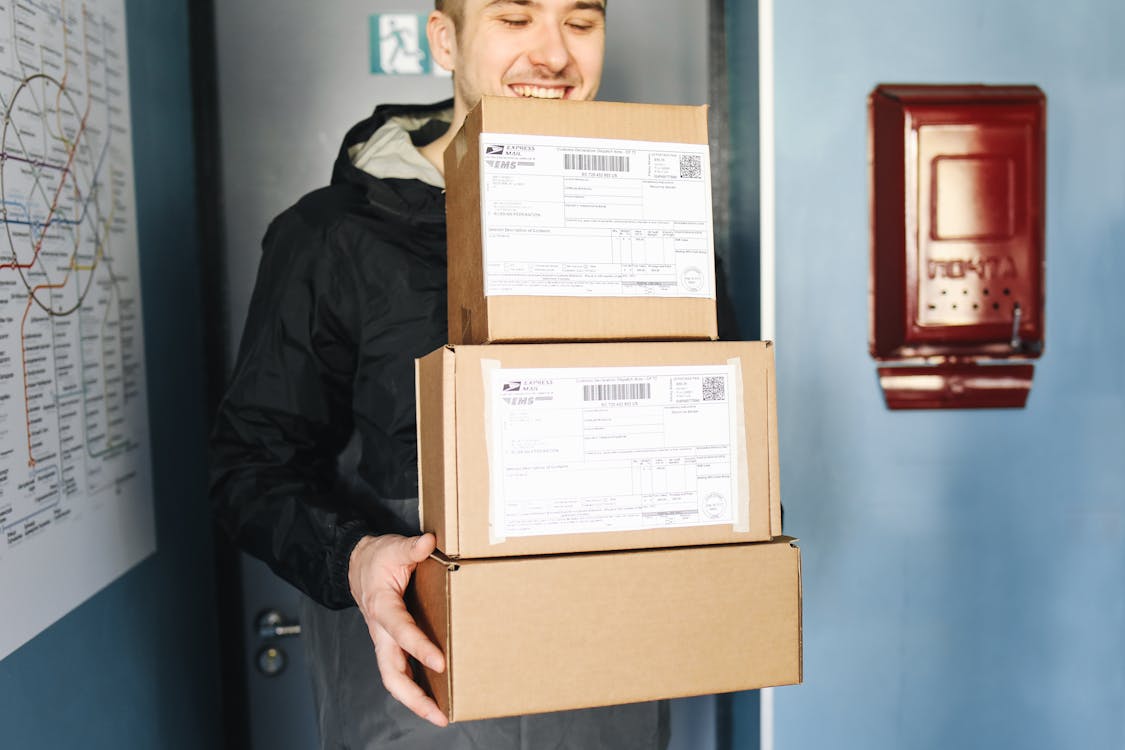
Pros and Cons of Expedited Shipping
Pros
-
- Fast delivery.
- Fewer risk of damaged items.
- Increased customer satisfaction.
Cons
-
- It can be expensive.
- It takes a company more time to fulfill separate expedited orders instead of fulfilling bulk packages with regular shipping methods.
- Customers cannot edit their orders after a limited time frame.
Is Expedited Shipping Right for You?
Regardless of what kind of e-commerce you are, there will always be a customer than needs their order last minute. Offering expedited options are a great way to satisfy your more impatient customers and keep them loyal to your brand.
BOPIS:
Finally, let's talk about BOPIS: buy online, pick up in-store. In addition to buyers receiving their products faster, local customers can pick up their orders the next or the same day of their transaction if they live close to a distribution center.
This feature is a must-have if you do local business and allow customers to pick up their orders in person. Making your local consumers' purchasing experience easier by offering pick-up alternatives increases their likelihood of making repeat purchases and recommending your brand.
"67% of shoppers in the US have used BOPIS in the past six months."
How Does BOPIS Work?
- A customer makes a purchase & inputs their shipping address.
- You let them know they are eligible for free in-store pickup.
- Customer picks up their order in-store free of charge.
Pros and Cons of BOPIS
Pros
-
- No shipping fees.
- Immediate gratification.
- Increased customer satisfaction.
Cons
-
- Must have a retail location for pick up.
- More time-consuming for customers.
- Reduces privacy and comfort.
Is BOPIS Right for You?
Buy online shop in-store is a great option for stores looking to appease their local customers. If your brand offers items consistently that buyers would make the commute for then give them the option too!
2021 Holiday Shipping
In the end, choosing your holiday shipping option is important. Finding the best one that fits your brand and what you’re looking for is important, and that’s what we want to help you do. You might even offer different shipping options around the holidays than the rest of the year.
We commit to providing in-depth and valuable information to our readers. If you found this holiday shipping article helpful, we recommend you check out our in-depth 2021 Holiday E-commerce Guide.
Not only do we touch more on holiday shipping, but we also dive deep into various e-commerce topics and concerns, provide over 40 peak season tips and tricks, and provide you the appropriate tools to make your e-commerce business not only nail this year's holiday shipping, but your entire 2021 peak season.
Holiday Shipping with Falcon
We all know that shipping can be a hassle, especially during the holiday season. When partnered with Falcon Fulfillment, we take the hassle out of your hands and work our shipping magic with your e-commerce business to provide exquisite packaging, on time orders, and most importantly, satisfied customers. Make the switch today.
Case Study: How West Paw Utilizes Falcon Fulfillment To Reach Over 1 Million Dogs Across The World
All images courtesy of West Paw
From Fabric to Famous
In 1996, Montana native Spencer Williams made a decision to purchase a small pet toy company known as Pet Pals, in Livingston, Montana. At 23 years old, Mr. Williams had a goal to produce and manufacture the highest quality and safest products for man’s best friend.
West Paw started out making small, fabric pet toys, and over the past 25 years has grown to become one of the most recognized eco-friendly and sustainable pet brands in the US. 25 years after his initial purchase, Mr. Williams had reinvented the pet industry with award-winning eco-friendly pet toys, beds, leashes, collars, and treats.
West Paw began with a recipe box that contained the names of Pet Pals customers. These customers provided the fuel that West Paw needed to continue its road to greatness.
Key Metrics:
- 3x Future Scale Expectation
- Highest Q3 success with Falcon in 2021
- 40+ countries reached
- 6,000+ US retailers
- 1 Million dogs reached
“None of our successes would have happened without the relationships we formed all those years ago, many of which are still going strong today.”¹
Spencer Williams, CEO and Owner, West Paw.
West Paw is now located in Bozeman, Montana, with another injection molding facility in northern Montana. Between their two locations, they now employ over 100 team members. In August 2021, West Paw celebrated its 25th anniversary and now sells to over 6,000 US retailers and can be found in over 40 countries worldwide – that’s a lot of happy dogs.

Em-bark-ing from Self Fulfillment
From 1996 to mid-2021, West Paw continued to do all of its business in-house. They managed each and every order down to the shipping label. From designing, manufacturing, and inventory to fulfillment and delivery. This process was manageable for quite some time but then orders began outpacing their ability to provide their customers with the exceptional customer service they expected from West Paw. Order delays were getting so backed up they reached up to 11 days around peak times. In June of 2021, West Paw began its search for a recognized 3PL partner to help them keep up with the increased demand for American-made pet products.
Inventory and Scalability
West Paw’s primary motivation for beginning its 3PL journey was the need for storage space and inventory control. As the popularity of their eco-friendly dog toys began to soar, so did their order volume. West Paw’s inventory expanded over time to meet wholesale and direct-to-consumer needs throughout the United States. As their order volume and inventory level grew, available space within their warehouse shrunk.
Aside from needing inventory space, West Paw leaders were also looking for a fulfillment partner with the ability to scale with their company and its success. In the last 3 years, sales have doubled and they expect to see this strong growth continue. That’s why it was important to find an accountable 3PL with the ability to scale with West Paw’s success and increasing inventory needs.
Labor
West Paw’s ability to obtain extra labor assistance during peak times was limited. Because of the labor shortage affecting the US, they struggled to recruit extra hands to support their full-time employees. This resulted in longer delivery times, overwhelmed team members, and an increased chance of fulfillment errors.

As a result, when seeking a fulfillment partner, West Paw prioritized labor benefits. This means they needed a company that not only had a full workforce but had the ability to employ more staff if needed during high season. They needed to know they could rely on someone else to keep their fulfillment process running smoothly, accurately, and on schedule.
Shipping & Location
As more companies offer two-day shipping, West Paw’s customers were seeking faster delivery times. Because West Paw was fulfilling orders from Montana, shipments took on average two days longer to reach consumers on the east and west coasts. West Paw needed a fulfillment partner that could provide quick delivery and accessible warehousing locations.
Lending a Hand to Help Tails Wag
Once the team at West Paw decided what they needed out of a 3PL partner, they began their search. Thankfully, Andy Wunsch (Vice President of Sales & Marketing at West Paw), had researched 3PLs and knew what to look for. It didn’t take long for West Paw to discover Falcon Fulfillment.
Soon Sarah Spartas and Andy Wunsch were on their way from Montana down to Falcon’s corporate headquarters and west coast warehouse in Salt Lake City, Utah. Upon arrival, the team was taken on a tour of the warehouse. They were shown where their merchandise would be received, stored, picked, packed, and shipped. All while offering full transparency and answers to each question the team had for Falcon.
“I’ve been inside of over 100 different warehouses and I can spot what’s wrong with them very quickly. During my tour with Falcon, I couldn’t find anything that was [considered] a red flag”
Andy Wunsch, VP of Sales and Marketing at West Paw.

An Improvement in Labor & Scalability
“In the last two days of our biggest month in history, Falcon processed close to 300 orders. Here in Bozeman, we could have done about ⅓ of that.”
Andy Wunsch, VP of Sales and Marketing at West Paw.
Once West Paw and Falcon Fulfillment had made their partnership official, orders went out quickly and smoothly.
As soon as the merchandise was shipped out of Montana to Falcon’s warehouses, hundreds of orders were sorted and organized in designated areas, where they would soon be delivered out to their furry customers.
West Paw was able to see how easily they could scale their company after watching Falcon integrate their inventory effortlessly and without delay. Additionally, peak times were no longer a problem. Instead of the burden of hiring seasonal workers on top of full-time staff, West Paw is now able to focus on more important tasks while Falcon takes care of labor and holiday staffing.
Faster Shipping & Accessible Locations

From West Paw’s warehouse in Bozeman, Montana, Falcon’s warehouse was reached in less than a day via truck. This alone saved two days of shipping West Paw had previously experienced when shipping to the east and west coasts from Bozeman.
Not only is West Paw experiencing faster shipping, but they’re also able to visit Falcon’s warehouse with ease. Drop-ins ensure full transparency and an in-person look at where inventory is stored, how it’s packaged, and much more.
Additionally, Falcon’s east coast warehouse in Kentucky allows West Paw to efficiently deliver items across the country.
Full Transparency & Speedy Onboarding
West Paw’s onboarding with Falcon Fulfillment went rather quickly. Following West Paw’s inquiry, they were assigned a specific account manager who would guide them through the onboarding process step-by-step and go through the new systems they would be integrating with.
Falcon was able to navigate West Paw through the integration of their older software and Falcon’s newer technology. The transfer was painless and simple.
As told to Falcon Fulfillment by Andy Wunsch, Vise President of Sales and Marketing:
“Onboarding took about 12 weeks. [We were] trying to launch in that time frame before we got into our busy season.
[Using Asana], everything was easily tracked, and all the instructions provided by my account manager were easy to follow.
Customer service teams are available in our portal almost every day, and you know, we’re always learning.
Overall, the onboarding was very speedy. I think Falcon could have gone even faster, but West Paw just couldn’t go as fast.
Our IT team had nothing but compliments for the Falcon IT team.”
Fur to Feathers – Culture Matching
West Paw focuses on sustainability, safety, and high-quality products for dogs. It was important for West Paw to find a partner with matching values.
Falcon Fulfillment’s culture compliments West Paw.
West Paw needed a partner who upholds the same eco-friendly values. As a result, the West Paw team felt confident in Falcon’s fulfillment process. They knew their products would reach their customers with the same love and handcrafted care that previously came from the employees who work at West Paw’s warehouse.
“Falcon [has a] commitment to being eco-friendly and [sustainable], whether it’s solar and water, or how the company treats its employees.”
Andy Wunsch, VP of Sales and Marketing at West Paw.
What’s next for West Paw?
Our favorite pet brand has some fun surprises coming up for this holiday season. Pets around the world will soon be enjoying special treats, toys, beds, treats, and much more.

West Paw is expected to scale threefold over the next couple of years and Falcon Fulfillment is excited to support this force for good in delivering happiness to dogs and pets around the world.
Falcon is devoted to maintaining the success of West Paw and striving to provide sustainable and recyclable toys to pets in every home, in every city, in every country.
Here’s to the success and future prosperity of our wonderful partner: West Paw.
“There’s 100 Million dogs in the United States. We’re reaching about 1 million of them. That means we still have a lot of dogs to go.”
Andy Wunsch, VP of Sales and Marketing at West Paw.
Learn more
Boost your e-commerce business by finding a better order fulfillment partner. See if Falcon Fulfillment is the best fit for your brand.





